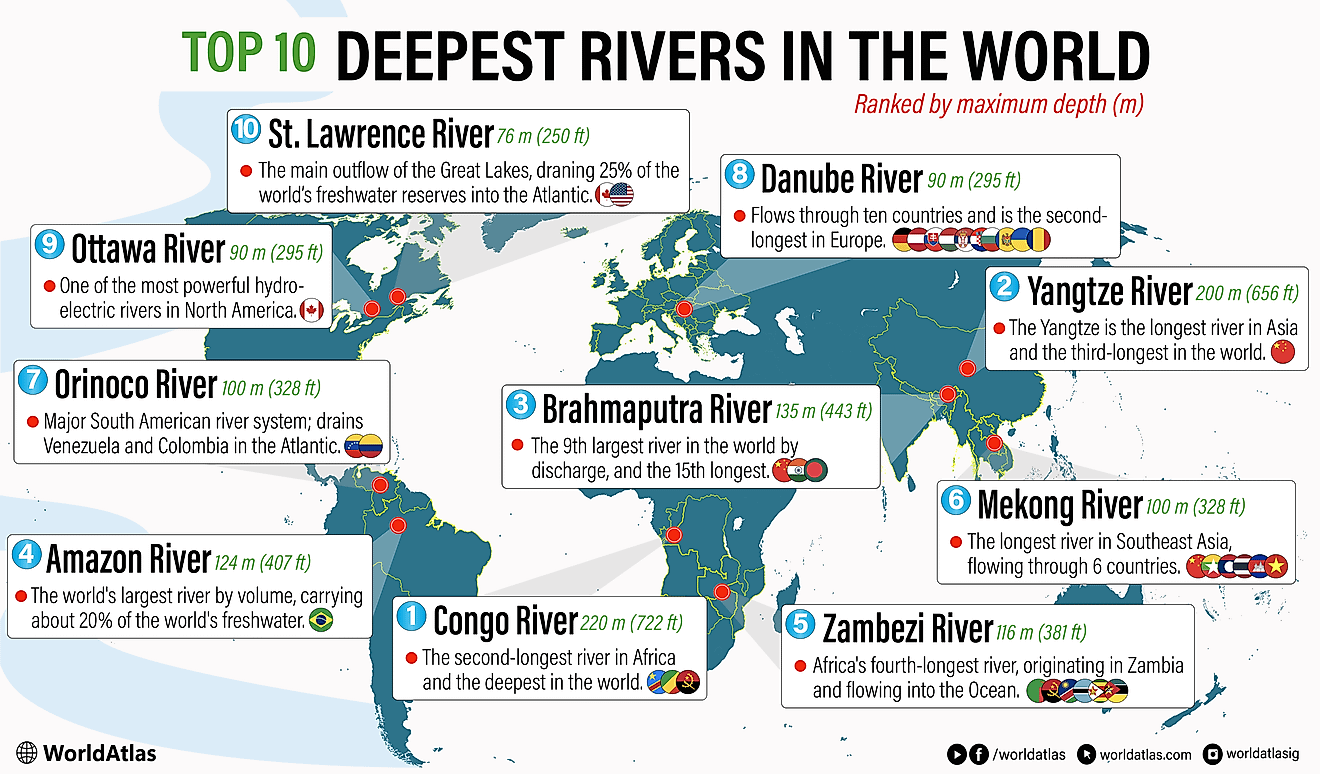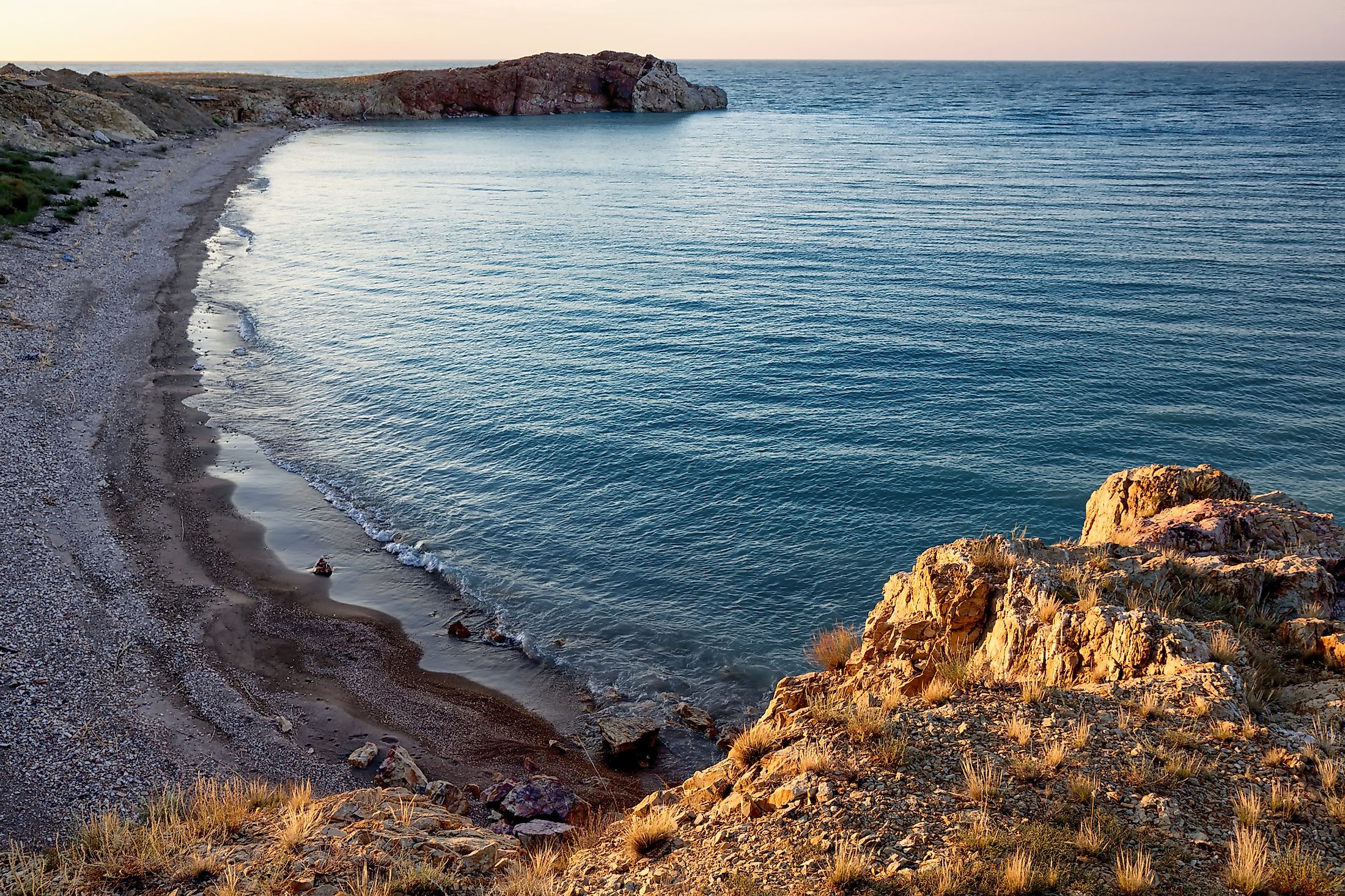
Lake Balkhash
Lake Balkash is the fifteenth-largest lake in the world and the second-largest saline lake. This crescent-shaped lake is located in southeast Kazakhstan and belongs to the endorheic Balkhash-Alakol basin that stretches between Kazakhstan, China, and Kyrgyzstan. The lake is renowned for its large size, fluctuating between 9,320 and 11,806 square miles, and its duality: the eastern half of Lake Balkhash contains fresh water, and the western half of Lake Balkhash contains salt water.
History
"Balkhash" is a word of Tatar, Kazakh, and Southern Alti origin that means "tussocks in a swamp." Mongols and Turks called it "the place of the Seven Rivers" in the eighth century, serving as a meeting place for local tribes and groups. In the years of the Chinese Qing dynasty (1644-1911), Lake Balkhash formed the Northwestern-most border of the Chinese Empire. The Russian conquest of Central Asia then recognized as Turkestan, resulted in the lake changing to Russian hands in 1864. The fall of the Soviet Union in 1991 saw the formal creation of Kazakhstan with Lake Balkhash within its borders.
Geography
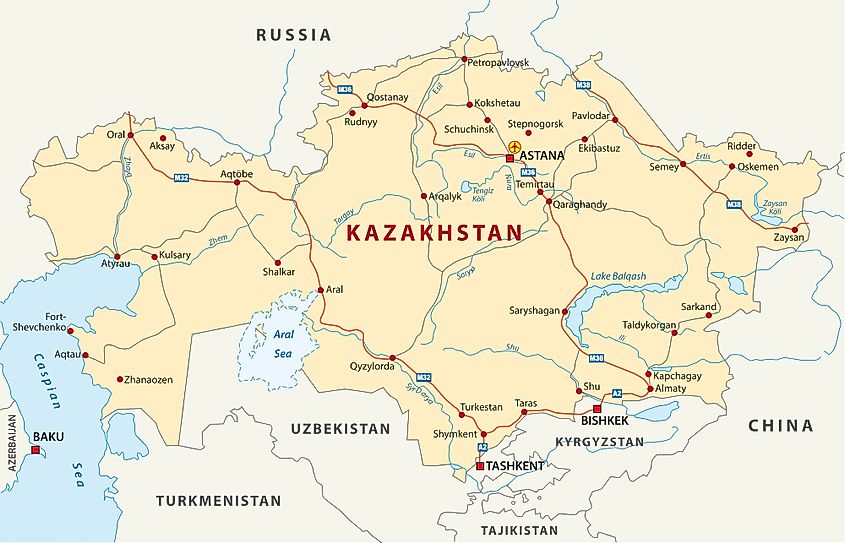
Situated in southeast Kazakhstan, Lake Balkhash is bordered to the north of the lake by a large area of peneplain known as the Kazakh Uplands and to the south by the sandy Saryesik-Atyrau Desert that stretches for 400km through east Kazakhstan. The lake is 1,122 feet (342m) above sea level in the deepest region of the large Balkhash/Alaköl basin; this basin belongs to the larger Dzungarian Alatau basin that also includes the Sasykkol, Alakol, and Aibi lakes. Within the Balkhash Lake are 43 islands, totaling 66 square kilometers of land. Researchers note that new islands are likely to form due to its shallow water level and fluctuating water volume.
The different sections of the lake also differ in shoreline terrain. The western bank is high and rocky with limestone, tuff, and granite at an average 80-foot (24m) elevation. The southern bank is low (approximately 5 feet) and sandy, featuring reeds and nearby smaller lakes. There are many bays on the Balkhash shoreline, including Karakamys, Kashkanteniz, Saryshagan, Karashigan, Kukuna, and Guzkol.
Climate
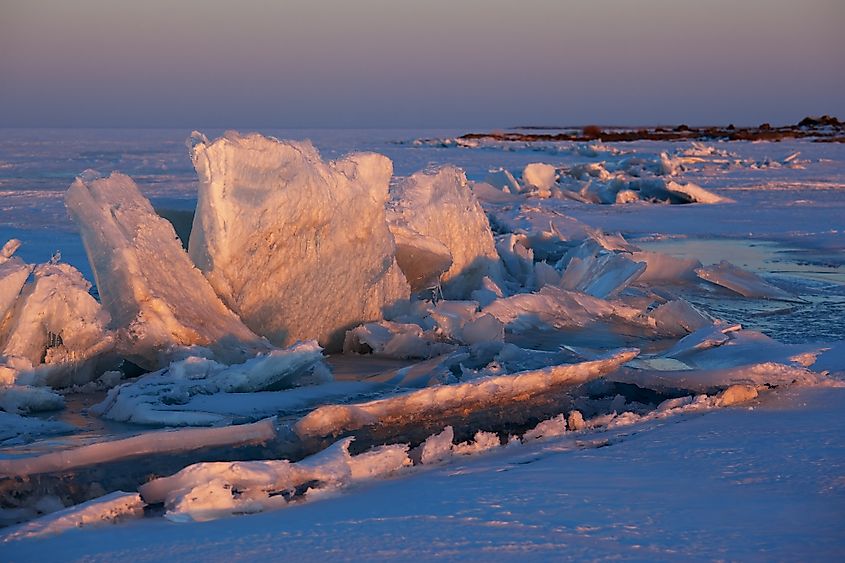
The lake is hot, breezy, and relatively dry, featuring heavy contrasts between summer and winter. Winters are cold and barren, with the lake freezing for six months of the year between November and April, and temperatures typically hit a low in January near 7 degrees Fahrenheit. There are approximately 110-130 days of sun per year, with temperatures hitting highs in July around 86 degrees Fahrenheit. The relative humidity is around 60% with an average annual rainfall of 131mm. There are near continuous winds around 10-12mph gusting southward in the west Balkhash and south-west in east Balkhash.
Size
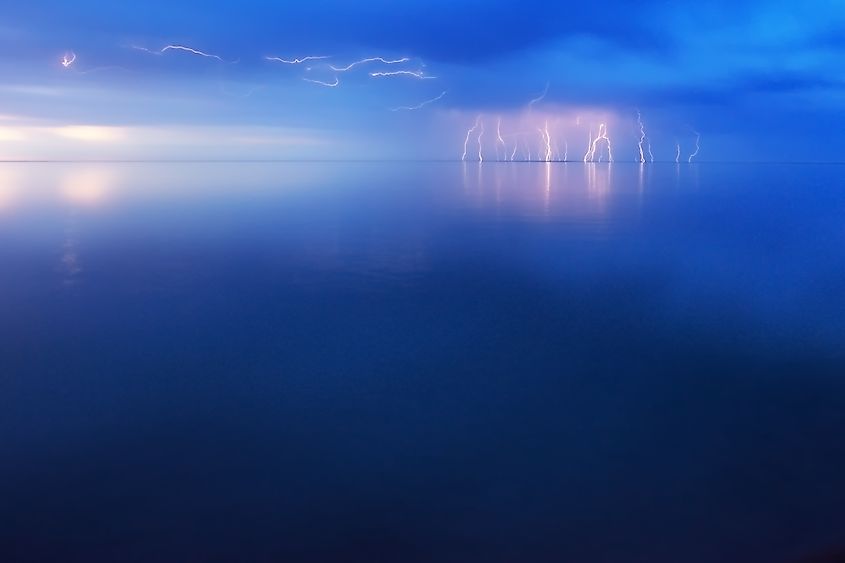
The Saryesik Peninsula divides Lake Balkhash into two hydrologic regions, each with differing topography, color, depth, and salinity. The size of the lake is dependent on its balance of water, but it roughly remains between 9,320 and 11,806 square miles. Historically, the lake has been shrinking due to smaller inflows caused by hydroelectric projects and reservoirs: the lake surface dropped by 7 feet (2.2m) between 1970 and 1987. The lake's total volume is roughly evenly distributed between the western half (46%) and the eastern half (54%). The western half is shallow and quiet, only reaching a maximum depth of 36 feet (11m); the eastern half is much deeper, reaching 85 feet (26m). The lake extends a total of 376 miles (605 km) with a width of 46 miles (74km) and a total coastline of 1,902 miles (3,061km).
Water Composition
Water in the western portion of Lake Balkhash is fresh and suitable for drinking and industrial use despite its yellowish and gray tint. Visibility is also lower, only reaching 3.3 feet (1m). The eastern half of the lake is described as brackish and salty (3.5g/L), possessing mesmerizing and everchanging emerald-blue colors and fantastic visibility: light penetrates up to 16.4 feet (5m).
Hydrology
Inflows to Balkhash come from various river sources, including the Ili, Karatal, Aksu, Lepsy, Byan, Kapal, and Koksu. The most significant of these is the Ili River, which meets the eastern shoreline, delivering around 70-80% of the lake's water. The Ili River is largely fed by snowmelt and precipitation from the mountains of the Xinjiang province in China. The lake has no outlets and only loses water through a high evaporation rate caused by wind, dry climate, and high summer temperatures.
Flora And Fauna
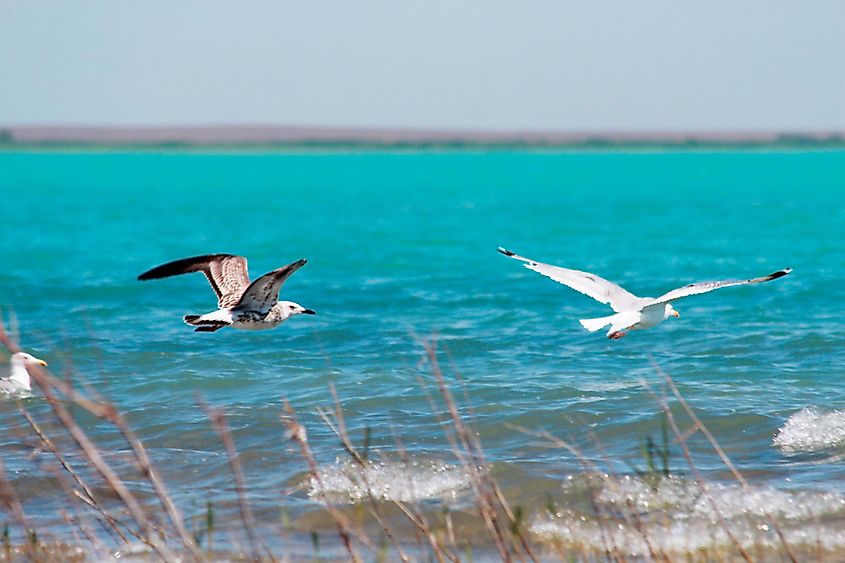
Lake Balkash's greenery is largely owing to the Ili Delta, covering 4,971 square miles. Meeting on the lake's eastern shoreline, the surrounding Ili Delta features 10-ft (3m) reeds (Phragmites australis) considered invasive in the United States but essential to the Kazakh ecosystem. Individual willow trees and riparian forests border the long coastline. Once healthy and abundant, the flora and fauna of the lake have declined since the 1970s due to deteriorating water quality from pollution by nearby energy projects.
The lake is host to some species of fish and many bird species. There are six native fish, most notably the Balkhash Schizothorax and the Balkhash Perch. There are also significant populations of non-native fish, like the carp, perch, asp, and bream. Lake Balkhash is host to over 120 species of birds. The most popular species are of the Crane and Pelican families, like the Cormorants, the Dalmatian Pelican, the Great White Pelican, and the Great Egret. There are twelve endangered bird species present, including the Dalmatian Pelican and the Great White Pelican.
Significance Today
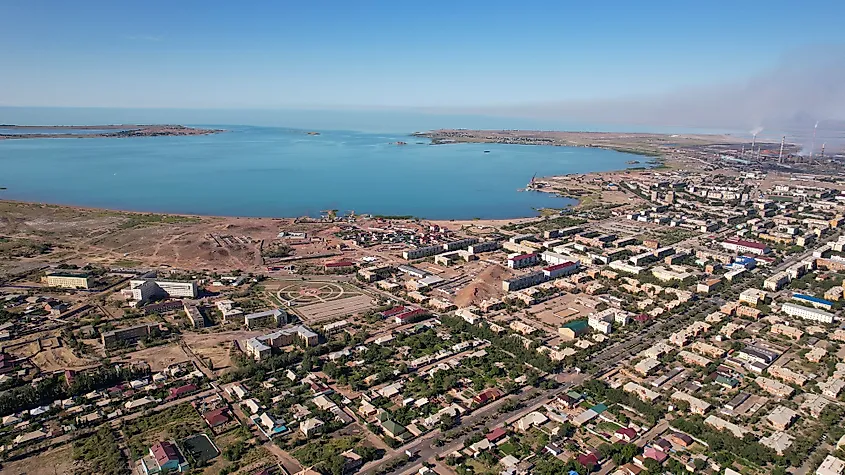
Despite its size, Lake Balkhash only serves a small coastline population, the largest being the city of Balkhash, with a population of 67,000. Still, major industrial activities are depleting the lake's flora, fauna, water level, and water quality. The Kapshagay hydroelectric power station's new reservoir, for example, reduced the flow of the Ili River by two-thirds, caused a significant decline in Lake Balkhash's water level, and left negative residual effects on the lake's salinity and ecology. The project reduced Ili's contribution to Lake Balkhash by about 10%, dropping to 70-80%.
This industrial development propels desertification, more dramatic dust storms and weather events, and increasing salinity in the soil and water. Much of the catch from the lake's fishing industry is now quarantined, and the surrounding wetlands of the Ili delta have shrunk.











